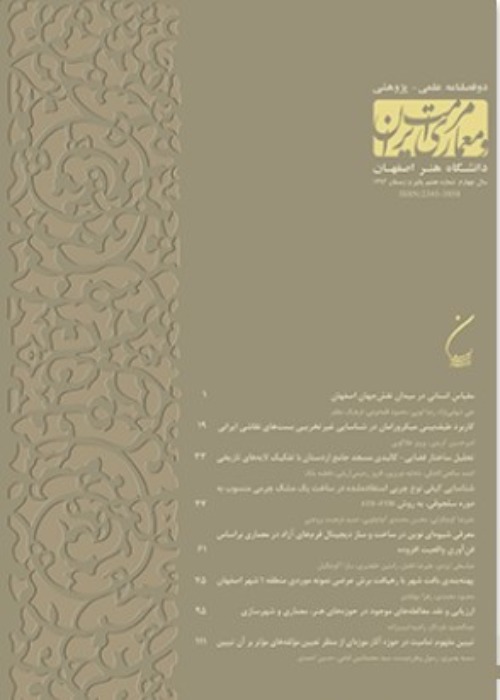Analysis of permissible water inscriptions in Jame’ Mosque of Esfahan
The inscription dedicated to permissible water in the Isfahan Grand Mosque is one of the most valuable endowment letters of the Safavid period. The content of the above inscription refers to the name of Amir Aslan bin Rostam Sultan Laleh Afshar Arshlou, who during the reign of Shah Tahmasb I, by digging a river, brought the permissible water to the mosque and dedicated it to this building. This research has been written for the first time with the aim of analyzing the above inscription and answering questions regarding the reasons for transferring water to the Isfahan Grand Mosque and speculating its route. The investigation is based on library, field and analytical studies. Research data is also collected based on field information (reading inscriptions) and library information (visual documents, books and articles). The results of the study showed that by examining the political and social conditions of the Safavid period, it became clear that the establishment of the central government, the recognition of the Shiite religion and social and economic security have been effective factors in creating a suitable environment for expanding endowment. In some cases, endowment has been a political move to get closer to the king and the court, or to keep the property safe. Dedication of property has also contributed to the political and social reputation of the courtiers. It seems that the role and influence of scholars in the political and social structure in the Safavid period has caused us to witness many endowments in this period. (Referring to the role of Sheikh Ali Manshar as Sheikh of Islam at the time in Isfahan). Acquiring the reward of the Hereafter and leaving a good name for oneself has been another motivation for the waqf for waqf. It also appears that the above stream was an independent river that was dug only to supply water to the Isfahan Grand Mosque, and that the city’s structure at the time, despite its gardens and groves, made this possible. It also seems that with the capital city of Isfahan, at the same time with the construction of a comprehensive urban plan in the Safavid period, the Isfahan Grand Mosque was destroyed and the above inscription was destroyed due to secrecy (not continuing the endowment) or negligence in the pipeline. The water of the mosque has been hidden and this has caused the destruction of the above river, and that is why, among all the detailed descriptions of the tourists from the Isfahan Grand Mosque, there has never been any mention of the flow of running water from inside the mosque.
- حق عضویت دریافتی صرف حمایت از نشریات عضو و نگهداری، تکمیل و توسعه مگیران میشود.
- پرداخت حق اشتراک و دانلود مقالات اجازه بازنشر آن در سایر رسانههای چاپی و دیجیتال را به کاربر نمیدهد.


